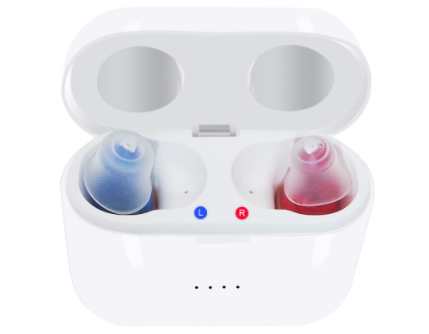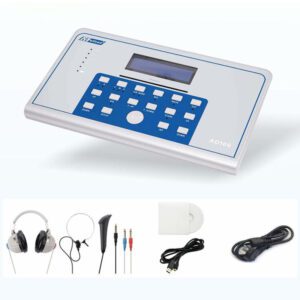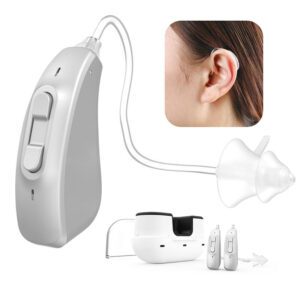hearing Aids are small electronic devices designed to amplify sound for individuals with hearing Loss. They work by capturing sound, processing it, and then delivering the amplified sound to the ear. Here’s a breakdown of how they function:

- Microphone
The hearing aid’s microphone picks up sound from the environment and converts it into an electrical signal. - Amplifier
The electrical signal is sent to an amplifier, which increases the strength of the signal. Modern hearing aids use digital signal processing to tailor the amplification to the user’s specific hearing loss, focusing on amplifying only the frequencies the user struggles to hear. - Receiver (Speaker)
The amplified signal is then sent to a receiver (speaker), which converts it back into sound waves and delivers it into the ear. - Battery
Hearing aids are powered by small batteries (either disposable or rechargeable) that provide the energy needed to operate the device. - Ear Mold or Earpiece
The sound is delivered into the ear through an ear mold or earpiece, which is custom-fitted to the user’s ear for comfort and optimal sound delivery.
Additional Features in Modern Hearing Aids:
Directional Microphones: Focus on sounds coming from a specific direction (e.g., in front of the user) while reducing background noise.
Noise Reduction: Reduces unwanted background noise to improve speech clarity.
Bluetooth Connectivity: Allows the hearing aid to connect to smartphones, TVs, or other devices for direct audio streaming.
Feedback Cancellation: Prevents whistling or feedback sounds.
Tinnitus Masking: Provides soothing sounds to help mask tinnitus (ringing in the ears).
Types of Hearing Aids:
Behind-the-Ear (BTE): The main device sits behind the ear, and sound is delivered through a tube or wire to an earpiece.
In-the-Ear (ITE): The entire device fits inside the outer ear.
In-the-Canal (ITC): Smaller than ITE, fitting partly in the ear canal.
Completely-in-the-Canal (CIC): Nearly invisible, fitting deep inside the ear canal.
Receiver-in-Canal (RIC): Similar to BTE, but the receiver sits inside the ear canal.
Hearing aids are customized to the user’s hearing loss profile, which is determined through a hearing test conducted by an audiologist. Regular adjustments and maintenance are often required to ensure optimal performance.


